Looking for Slides or Photos? Visit the 38th PLMA Conference Resource Page
38th PLMA Conference Agenda
November 12-14, 2018 in Austin, Texas

This event has ended. See the Resource Page for presentations and to access professional portraits. You must be signed in to access the Resource Page.
Monday, November 12, 2018
Concurrent Events (included in conference registration) |
|---|
| PLMA Interest Group Meetings |
| 8:00 - 9:00 am |
Evolution Training & Interest Group Breakfast
|
| 9:00 am - 4:30 pm |
Demand Response Fundamentals and Evolution
This one-day course explains how today's demand response initiatives are evolving to interact with an emerging future with distributed energy resources for peak load management and much more. The course content expands on the Evolution of Demand Response whitepaper and discussion.
Click to Read More
Learning Objectives:
- Articulate a common, descriptive language for describing the evolution of demand response as seen through the eyes of industry leaders;
- Explain the current state of the fundamental market principles and technology enabling demand response initiatives today;
- Compare and contrast how demand response programs perform relative to energy efficiency, thermal/battery storage, and renewable energy initiatives;
- Introduce examples of portfolio design strategies and implementation tactics to address the challenges of a fading boundary between bulk power exchange and retail electricity usage;
- Detail free and low-cost resources to learn more about topics and initiatives discussed;
- Download the free Demand Response Glossary of Terms and Definitions to get started today
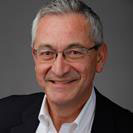 Co-Chair Mark Martinez Co-Chair Mark Martinez
Southern California Edison |
 Co-Chair Christine Riker Co-Chair Christine Riker
Energy Solutions |
|
|
Interest Group Activities
Join the PLMA Interest Groups for candid, interactive roundtables among practitioners from utilities, consultancies, and technology providers who are actively engaged in the load management industry. Don't miss the opportunity to learn from and share with your peers' successes and challenges in these areas of interest.
|
| 9:00 am |
Women in DM
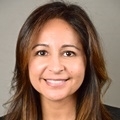 Co-Chair Melissa Knous Co-Chair Melissa Knous
Duke Energy |
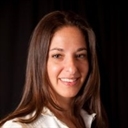 Co-Chair Erika Diamond Co-Chair Erika Diamond
EnergyHub |
 Co-Chair Lenore Zeuthen Co-Chair Lenore Zeuthen
Zeuthen Management Solutions |
Demand Response Participation in Energy Markets Across the U.S.
Moderator Erika Diamond
Learn about growth opportunities for utilities and third parties in markets today, the barriers to entering and/or staying in those markets and what the future looks likes.
Panelists:
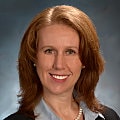 Susan Marinelli Susan Marinelli
Pepco |
 Beth Reid Beth Reid
Olivine |
 Damei Jack Damei Jack
Con Edison |
Breakout discussions on Demand Response and Demand Side Management topics.
Who Should Attend? Women and men attending the conference are encouraged to join us for this dynamic conversation.
- Women – Gain knowledge and perspective on how to develop and further your career in DSM — an industry in which we still see few women in leadership positions. Enhance your network by getting to know other women in the field.
- Men – Increase your understanding of the issues women face in our industry to: improve your team’s development and synergy, enhance your recruiting and management approach, and learn how to leverage the benefits of greater organizational diversity.
|
| 11:00 am |
Evolution Training & Interest Group Lunch
|
| 12 noon |
International
 Co-Chair Scott Coe Co-Chair Scott Coe
GridOptimize |
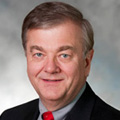 Co-Chair Ross Malme Co-Chair Ross Malme
Skipping Stone |
Come join us for the 2nd meeting of the PLMA International Interest Group in Austin. In this meeting we will discuss global growth Smart Grids, AMI and DER in emerging markets and developed markets. Ross Malme will discuss the most recent US Department of Commerce Smart Grid Top Markets report which ranks the top 10 international markets for T&D, ICT and Energy Storage. Scott Coe will give an update on DER standards being developed by the IEC. We will also discuss the international requests the PLMA Speakers Bureau has received for DR and DER support.
|
Connected Devices
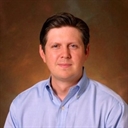 Co-Chair Justin Chamberlain Co-Chair Justin Chamberlain
CPS Energy |
 Co-Chair Poornima Eber Co-Chair Poornima Eber
National Grid |
 Co-Chair Olivia Patterson Co-Chair Olivia Patterson
Opinion Dynamics |
Ev'thang is bigger in Texas and The Connected Devices Interest Group will be no different. Y'all get excited about an action-packed, Texas-themed, set of interactive sessions. Our first session “Lone Star State of Mind” will feature the Godfather of BYOT, Scott Jarman from Austin Energy who will discuss the genesis and future of BYOT. SEPA and E-Source representatives Brenda Chew and Claire Valentine will offer compelling new research describing the latest and greatest in connected device trends and solicit your feedback on these trends through real-time surveys. Utility staff from National Grid, SCE and HECO will lead breakout groups focusing on considerations related to moving from one device to multiple devices within a connected device landscape, focusing on various technology types (EVs, storage, water heaters, gateways), as well as design implementation strategies (e.g., technological challenges for DRMS systems integration, integrated marketing approaches, and cost-effective incentive structures). The agenda is as follows:
Lone Star State of Mind – The Future of Connected Devices
 Scott Jarman Scott Jarman
Austin Energy and Godfather of BYOT |
Whatch Y'all Up To - Connected Device Research
 Justin Chamberlain Justin Chamberlain
CPS Energy (Moderator) |
 Brenda Chew Brenda Chew
SEPA |
 Claire Valentine Claire Valentine
E-Source |
This Ain't Our First Rodeo - Connected Device Program Administrator Breakouts
 Poornima Eber Poornima Eber
National Grid (Moderator) |
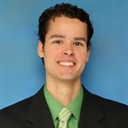 Paul Wassink Paul Wassink
National Grid |
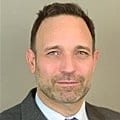 Rich Barone Rich Barone
HECO |
 Mark Martinez Mark Martinez
SCE |
Topical discussion and Next Steps
|
| 2:00 pm |
Shared Evolution Training & Interest Group Refreshment Break
|
| 2:30 pm |
DER Integration
 Co-Chair Rich Barone Co-Chair Rich Barone
Hawaiian Electric Company |
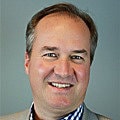 Co-Chair Matt Carlson Co-Chair Matt Carlson
Aquanta |
 Co-Chair John Powers Co-Chair John Powers
Extensible Energy |
 Lisa Martin Lisa Martin
Austin Energy |
Workshop: Bridging the Operations/Program Divide in DER Planning
Distributed Energy Resources (DERs) pose unique opportunities and challenges for distribution system planners and operators, emerging technology teams, and program managers alike. Often lacking a common nomenclature, all parties struggle to understand and define the benefits delivered and costs imposed by the increasing assortment of DERs being deployed on both sides of the meter. This workshop will start with a framing discussion by Lisa Martin of Austin Energy, followed by breakout sessions where Interest Group participants will identify the top challenges, opportunities and forward-looking concepts on DER technology, communications and control, and customer engagement.
Breakout Sessions
Based on the problem framing discussion, the interest group will then break out into three working groups, each facilitated by a Subject Matter Expert. In the context of the problem framing discussion, each working group will identify the top challenges, opportunities and forward-looking concepts relative to each breakout topic. The hour-long breakout will include 20-25 minutes of topic-specific problem definition, 20-25 minutes of solution ideas, and 10-20 minutes of preparation for reporting out to the larger group. The breakout sessions will address:
A. Technology
This breakout group will examine customer resources – and combinations of these resources that could be leveraged to address the emerging problems discussed in the Problem Framing session. This could include existing, known assets, or look into the future as new asset types become more prevalent. Operating constraints and interdependencies will also be explored.
B. Communications & Control
This breakout group will take a hard look at communications and control needs and challenges. The groups will look at both communications pathways and protocols, examine telemetry requirements and data integration and assimilation needs that may result from leveraging customer-sited assets to solve circuit-level issues.
C. Market Solutions
This breakout group will explore options for engaging the market. The discussion will range from the tried-and-true programmatic approach, to new and emergent market models including the role of aggregators and transactive energy business models. Opportunities to engage and incentivize the end consumer will also be considered. For example, would Alexa or Google Home play a role in facilitating this type of engagement? How about intermediaries?
Recap & Conclusions
Following the two rounds of breakout sessions, the SMEs will each present the top three challenges, opportunities and concepts identified in their respective breakout sessions.
|
Customer Engagement
 Co-Chair Andrea Simmonsen Co-Chair Andrea Simmonsen
Idaho Power Company |
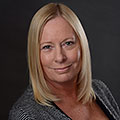 Co-Chair Sharyn Barata Co-Chair Sharyn Barata
Opinion Dynamics |
Gamification: is DR in the Game?
Gamification is a hot method for engaging customers, but do you know why it works, and more importantly, can it work for your DR program? This session will look at recent research related to gamification initiatives in the Energy Efficiency sector and explore ways that Demand Response programs can begin to "play".
Your Customer Engagement Co-Chairs will lead a lively session that provide take-aways on what gamification can and can't do, and some of the pitfalls to avoid. Ward Eames of NTC will share why gaming and engagement tie together using specific examples and results from a current project. Get a chance to play for yourself and experience engagement firsthand. Even if you aren't a Gamer, you will enjoy interacting with your fellow Interest Group members and sharing customer engagement strategies. So, plan to attend and find out the secrets to making gamification work for you — come ready to play!
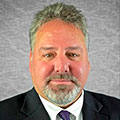 Ward Eames Ward Eames
NTC |
|
| 4:30 - 5:30 pm |
PLMA Evolution Training and Interest Group Networking Meetup
All interest group and training registrants are welcome to attend to network and learn how to make the most of the Conference activities.
|
| 6:00 - 8:00 pm |
Board of Directors Meeting
Business meeting with working dinner only for Board members and At-Large Representatives listed at www.peakload.org/plma-leadership.
|
| 8:00 - 10:00 pm |
Welcome Reception in the Big Bend Ballroom and Foyer
Join your fellow PLMA members for great networking and refreshing beverages. Open to all conference attendees at no additional fee, compliments of PLMA members. Not a member? Join us anyway and see what you're missing.
|
Wi-Fi Host: EnergyHub • Electric Power Ally Host: Landis+Gyr
| Tuesday, November 13, 2018 |
|---|
| |
Conference Co-Chairs
 Scott Jarman Scott Jarman
Austin Energy |
 Ricardo Luna Ricardo Luna
CPS Energy |
 Teague Douglas Teague Douglas
CLEAResult |
|
| 7:00 - 8:00 am |
Breakfast Buffet in Sponsor Lounge
|
| |
Morning General Session 1
 Co-Chair Andrea Simmonsen Co-Chair Andrea Simmonsen
Idaho Power Company |
 Co-Chair Teague Douglas Co-Chair Teague Douglas
CLEAResult |
|
| 8:00 am |
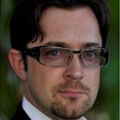
Opening Remarks
PLMA Chair Michael Brown, Berkshire Hathaway, NV Energy
|
| 8:30 am |

Welcoming Remarks
Lucia Athens, City of Austin
Lucia Athens is the City of Austin's first Chief Sustainability Officer, working as a champion for many ground-breaking achievements that support Austin's reputation as a leading green city. With more than two decades of green building and public service experience, Lucia is recognized internationally as an authority on sustainability. She describes herself as a "spark plug for positive change" and a "practical idealist." Lucia is also author of the Island Press book Building an Emerald City: A Guide to Creating Green Building Policies and Programs.
|
| 9:00 am |
Reinventing Demand Response with DERs
The industry today is bringing on more renewable and distributed energy resources. As technology advances and more renewable and distributed energy resources continue to come online, there are more options like EV chargers and interactive water heaters, as well as new market drivers to balance supply and demand on the grid to support reliability and capture operational efficiencies. Demand response practitioners are exploring the ability of demand response to fill valleys and clip peaks to respond to fluctuations and overgeneration along the grid.
Click to Read More
Learning Objectives:
- Obtain a high-level US perspective of the DR utility landscape (based on SEPA's Annual Utility Survey);
- Understand from the private and public power perspectives how utilities are leveraging DR to manage fluctuations along the grid; and
- Gain insights into the developing uses and values for demand response.
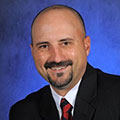 Moderator Moderator
Derek Kirchner
DTE Energy |
 Brenda Chew Brenda Chew
Smart Electric Power Alliance |
 Rich Barone Rich Barone
Hawaiian Electric |
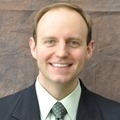 Troy Eichenberger Troy Eichenberger
Tennessee Valley Authority |
|
| 10:00 am |
Save or Shift? How to Successfully Transition from EE to DSM/DER
Balancing energy supply and demand is becoming more complex as more intermittent distributed resources are added to the grid. In this environment, DSM planners need to re-examine portfolios to determine how DER technologies fit with existing EE/DSM programs. It requires a granular planning process that considers the hourly load shape of each EE/DSM/DER technology to prioritize program opportunities based on alignment with resource needs. This session discusses an innovative approach to DSM/DER planning used to prepare Tucson Electric Power’s 2019 DSM Plan. TEP created a resource-needs heat map and used technology-specific load shapes to rank all existing EE programs and potential new DER technologies according to their fit with the utility’s marginal generation costs. This enabled TEP to propose a modernized portfolio that realigns existing programs and introduces new DER technologies using an objective method for determining whether to increase, decrease, maintain, modify, or eliminate each existing or potential program.
Click to Read More
Learning Objectives:
- Learn what to do when you need to incorporate DERs into your existing EE portfolio.
- Understand how to design your DER strategy to meet customer and grid needs.
- Objectively evaluate the value of new and existing technologies based on your resource needs.
 Ray Martinez Ray Martinez
Tucson Electric Power |
 Tom Hines Tom Hines
Tierra Resource Consultants, LLC |
|
| 10:30 am |
Refreshment Break in Sponsor Lounge
|
| |
Morning General Session 2
 Co-Chair Ricardo Luna Co-Chair Ricardo Luna
CPS Energy |
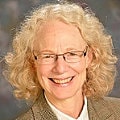 Co-Chair Ruth Kiselewich Co-Chair Ruth Kiselewich
ICF |
|
| 11:00 am |
Practitioners' Perspectives on The Future of Distributed Energy Resources
Where do the current DR/EE/Renewables activities of utilities fit in a DER future of iDSM, NWA, storage and more. This roundtable discussion will offer utility practitioner perspectives on how Distributed Energy Resources, as an umbrella term, is evolving from a program focus on Peak Load Emergencies to Market/System Economics to Operational Management. This roundtable will include structured dialogue on topics such as:
- Repositioning for system-wide deployment to be targeted/locational
- Business Process Changes Necessary to Evolve DERS from Emergency to Operations
- Where DR fits in a DER construct relative to utilities that are long on generation with weak market/regulatory signals and potentially-stranded infrastructure costs
- What is a DERMS and what’s the path to get there
- What are individual utility DR Potential Studies not telling senior executives
- Balancing customer satisfaction and customer acquisition issues
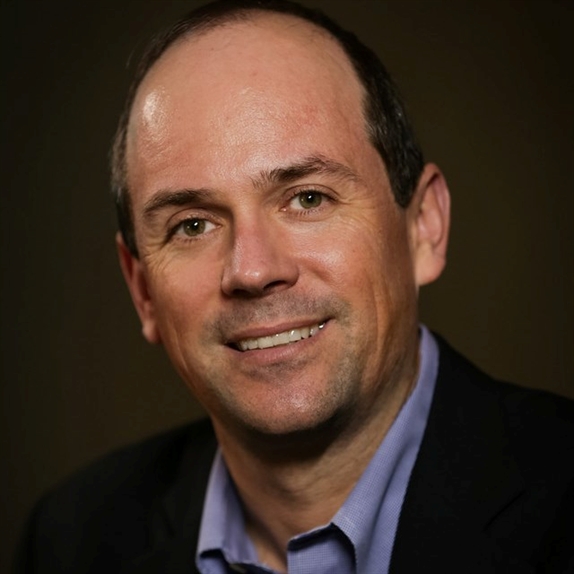 Moderator Moderator
Jason Cigarran
Itron |
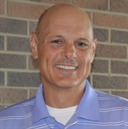 Jim Musilek Jim Musilek
North Carolina Electric Membership Corporation |
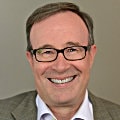 Rich Philip Rich Philip
Duke Energy |
 Michael Brown Michael Brown
Berkshire Hathaway, NV Energy |
|
| 12 noon |
Lessons Learned from Six Years of BYOT at Austin Energy
Bring Your Own Thermostat (BYOT) was a new concept when Austin Energy rolled out the Power Partner Thermostat Program in 2012. Six years later, the program is going strong and many of the largest utilities in the country have launched BYOT programs. Scott and Chris will provide an in-depth retrospective and share data from the life of the program. They will discuss the genesis of this innovative concept in 2012 and Austin Energy’s initial configuration and introduction of the program concept; approaches to manufacturers and vendors engagement; and how the structure of program has evolved over the past six years.
Click to Read More
Learning Objectives:
- Learn how to create the best possible customer experience.
- Understand how to minimize administrative burden and manage multiple partner relationships.
- Take away a process for tapping into manufacturers existing customer relationships.
 Scott Jarman Scott Jarman
Austin Energy |
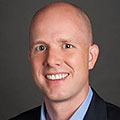 Chris Ashley Chris Ashley
EnergyHub |
|
| 12:30 pm |
Lunch Buffet in Sponsor Lounge hosted by Tendril
|
| |
Afternoon General Session 1
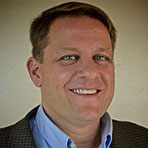 Co-Chair Brian Doyle Co-Chair Brian Doyle
Xcel Energy |
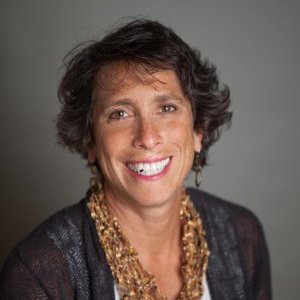 Co-Chair Lynn Stein Co-Chair Lynn Stein
E Source |
|
| 1:30 pm |
Moving Mountains: Systems Integration to Support 2-Way Switches @ PG&E
When PG&E set out to leverage their AMI network to support the deployment of central AC 2-way direct load control switches, a harsh reality set in: Could we actually move the many mountains of IT systems? Standing up more reliable smart grid technology involved complex internal IT projects; multi-year lab tests and a field test; penetration testing; and coordination with vendors associated with device development, AMI network and head-end system, program implementation, IT and the DRMS. This presentation offers a glimpse into what a major U.S. utility had to go through in order to step into the future of a more flexible smart grid technology and make it operationally advanced.
Click to Read More
Learning Objectives:
- Understand the scope of product development.
- Learn strategies for vendor coordination.
- Take home an understanding of how to do benchmarking for a major technology shift.
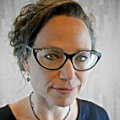 Wendy Brummer Wendy Brummer
Pacific Gas & Electric Co. |
 David Fleming David Fleming
GoodCents/Franklin Energy |
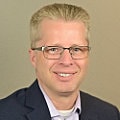 Darren Gronewold Darren Gronewold
Energate/Tantalus |
 Paul Notti Paul Notti
Itron |
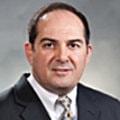 Paul Wyman Paul Wyman
Lockheed Martin Energy |
|
| 2:00 pm |
This is Getting Complicated… Planning DR Resources in a World of DERs
Utility planners used to have just one customer-side resource to worry about: EE. Then, the world expanded to DR. Now we have too many acronym’d resources to say without taking a breath and customers adoption of DER technologies in some jurisdictions is significant enough to move the needle in system planning. This is one of the cruxes of the DER evolution—how can utilities predict the location and timing of thousands of distributed customer adoption decisions that are increasingly occurring outside of the utility’s influence? Potential studies typically have provided the starting point for planning, but now utility planners need to go a step further and forecast the actual adoption of DER, often at highly granular levels. This presentation will discuss the methods and learnings from a utility case study and across the country in the shift towards DER forecasting to feed IRP, distribution planning, and customer engagement.
Click to Read More
Learning Objectives:
- Learn how utilities are evolving their single-resource DR potential studies to become multi-resource DER forecasts that are more tightly integrated with non-DSM functions at the utility.
- Understand new data streams and new analytical methods for incorporating DER into planning (e.g., understanding individual customer propensities to adopt, accounting for interactive effects, etc.).
- Take home best practices in cross-silo coordination (e.g., upfront coordination between T&D planners and DER program planners, developing shared customer-facing databases, etc.)
 Shauna Jensen Shauna Jensen
PGE |
 Robin Maslowski Robin Maslowski
Navigant |
|
| 2:30 pm |
Utility DR Auctions: A Practical Guide
In many ISO/RTOs demand response is primarily procured via capacity auctions, there has been much discussion recently about using market-based mechanisms, such as auctions for DR procurement at the utility level, however there is little practical experience with such auctions. This presentation will talk about theoretical and practical aspects of utility level DR auctions, based on Con Ed’s experience with DR and Demand Management auctions.
Click to Read More
Learning Objectives:
- Learn the benefits and drawbacks of utility auction and basic auction design principles.
- Understand major differences between wholesale and retail auctions.
- Take home the conditions for a successful auction and lessons learned from Con Edison auctions.
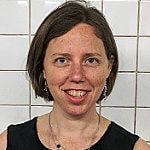 Shira Horowitz Shira Horowitz
Con Edison |
|
| 3:00 pm |
Refreshment Break in Sponsor Lounge
|
| |
Afternoon General Session 2
 Co-Chair Scott Jarman Co-Chair Scott Jarman
Austin Energy |
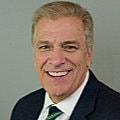 Co-Chair Dave Hyland Co-Chair Dave Hyland
Zen Ecosystems |
|
| 3:30 pm |
Non-Wires Alternatives Projects Worth Watching: Key Insights from SEPA & PLMA Joint Research
Discover key considerations from leading non-wires-alternatives (NWA) projects that are deferring the need for traditional electric grid infrastructure upgrades. Hear results from an industry-wide call for project nominations that led a peer group to select 10 NWA projects that have compelling stories and lessons-learned to share back to the industry. Since 2016, National Grid has identified more than 20 NWA opportunities through its capital investment planning process. This presentation will share some of our learnings regarding project identification, procurement processes, benefit cost analysis tool development and rate case incentives. Con Edison has had many key takeaways and lessons learned from the first large program we are implementing, to the streamlined approach of identifying and implementing newer projects. They have also found different ways to communicate these projects to the market and are working to continuously improve our approach to non-wires solutions, with our customers and market partners in mind.
Click to Read More
Learning Objectives:
- Learn about the 10 selected case studies representing non-wires alternative programs around the United States, and how they were selected.
- Understand how utilities—and others—are exploring lower cost, higher consumer and environmental benefit solutions with non-wire alternatives.
- Take away alternative strategies for utilities to meet changing system needs without traditional transmission and distribution upgrades.
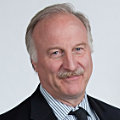 Steve Cowell Steve Cowell
E4TheFuture |
 Brenda Chew Brenda Chew
Smart Electric Power Alliance |
 Tiger Adolf Tiger Adolf
PLMA |
 Marie Schnitzer Marie Schnitzer
National Grid |
 Damei Jack Damei Jack
Con Edison |
 Sarah Arison Sarah Arison
Bonneville Power Administration |
|
| 4:30 pm |
Sponsor Showcase Lightning Round
In this 30-minute session you will hear from several of our sponsors about the essence of their solutions. Our Co-chairs have vetted the presentations and helped the sponsors get their key messages compressed down to no more than 3 minutes. This is not a marketing pitch, but an educational statement from the sponsors on what they do with specific examples of how they provide value.
 Co-Moderator: Mark Martinez Co-Moderator: Mark Martinez
Southern California Edison |
 Co-Moderator: Christine Riker Co-Moderator: Christine Riker
Energy Solutions |
Showcase Presenters:
 Shane O’Quinn Shane O’Quinn
AutoGrid Systems |
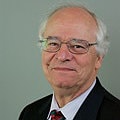 Joseph Childs Joseph Childs
Eaton |
 Tiffany McCann Tiffany McCann
EFI |
 Emilie Stone Emilie Stone
Tendril |
 Rolf Bienert Rolf Bienert
OpenADR Alliance |
|
| 5:00 - 6:30 pm |
Networking Reception in Sponsor Lounge hosted by AutoGrid Systems
A key value to PLMA events is the opportunity to network with conference participants. Join us for a cocktails and appetizers. Come and share what you learned and get additional details about your topics of interest.
|
Wi-Fi Host: EnergyHub • Electric Power Ally Host: Landis+Gyr
| Wednesday, November 14, 2018 |
|---|
| 7:30 - 8:30 am |
Breakfast Buffet in Sponsor Lounge
|
Concurrent Breakout Sessions
|
Track 1
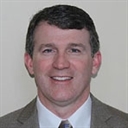 Co-Chair Brian Solsbee Co-Chair Brian Solsbee
TEMPA |
 Co-Chair Debyani Ghosh Co-Chair Debyani Ghosh
Navigant |
 Co-Chair Paul Wassink Co-Chair Paul Wassink
National Grid |
|
| 8:30 am |
Smart Charging of EVs to Serve Grid Needs
In this session, you will hear how Olivine is helping multiple agencies in California to aggregate EVs into a grid resource through smart charging technologies and implementation of charging optimization strategies. Olivine will share learning about EV charging patterns and explore implications for program design to engage customers, with lessons learned and best practices based on experience to date.
Along with this, you will hear from ConEd and FleetCarma about ConEd’s innovative Smart Charge program that help customers reduce the cost of EV charging and automatically earn rewards through FleetCarma’s SmartCharge platform. It is one-of-a-kind EV program because the monitoring occurs at the vehicle rather than the station, and customers can track EV stats in real time at the vehicle. The program has helped realize quantifiable load shifts.
Click to Read More
Learning Objectives:
- Where and when are people charging electric vehicles and what are the implications for aggregating into a grid resource?
- What challenges and opportunities do electric vehicle charging patterns present for energy companies and grid operators?
- What are the most effective program design approaches to engage EV owners and to shape usage patterns?
- Learn how to maintain customer satisfaction in the face of complex technology.
- Understand the advantages of monitoring at the vehicle, rather than the station.
- Take away tips for tracking stats and incentivizing customers.
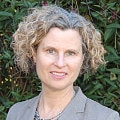 Valerie Nibler Valerie Nibler
Olivine |
 Sherry Login Sherry Login
Con Edison |
 Eric Mallia Eric Mallia
FleetCarma |
|
| 9:00 am |
Beneficial Electrification and Role of Innovative Rates to Manage Growth in Electricity Use
Robin Lisowski from the Wisconsin Energy Conservation Corporation (WECC) will talk about the electric slide and movement toward beneficial electrification and programmatic synergies with energy efficiency, possible shift in measurement that accounts for both energy efficiency and emissions efficiency (“emiciency”), and opportunities to use rate designs to influence energy use.
EVs are one of the primary drivers for beneficial electrification that help build load and increase load factors. In this session, Allison Hamilton, National Rural Electric Cooperative Association (NRECA) will discuss cooperative experiences and case studies on what coops are doing to implement innovative rate structures to encourage EV adoption and manage EV charging loads.
Click to Read More
Learning Objectives:
- Learn how to prepare for increased penetration of EVs.
- Understand what rate structures are best suited for encouraging EV adoption.
- Take home case study examples of what cooperatives are doing.
 Allison Hamilton Allison Hamilton
NRECA |
 Robin Lisowski Robin Lisowski
Wisconsin Energy Conservation Corporation |
|
| 9:30 am |
Lessons from Residential Customer Experiences with Time Varying Rates
Pacific Gas and Electric Company (PG&E), with Research into Action, will present research findings on how residential customers reacted to marketing, education, and outreach (ME&O) approaches for Time-Of-Use rates and customer experience with these rates. The effort included ~3,500 residential customer surveys, qualitative focus groups, in-depth interviews, and online bulletin boards with customers. This presentation will cover initial findings on the impact of automatic TOU transition on customer awareness, understanding, satisfaction, engagement, opt-out rates, and more.
Next, you will hear from Cadmus Group evaluation findings from PGE’s Flex Pricing Pilot that tested 12 different residential retail rates and behavioral DR on approximately 16,000 customers from 2016 to 2018. The evaluation involved collection and regression analysis of customer interval consumption data, interviews with utility and implementation contractor managers, and surveys with pilot customers. The evaluation provides many interesting findings, including several that standard economic theory does not predict and that support behavior-based models of customer decision-making.
Click to Read More
Learning Objectives:
- Take home the best ways to inform residential customers of automatic TOU transition.
- Understand various ways to effectively evaluate the effectiveness of your TOU default ME&O efforts.
- Learn which ME&O strategies increase and which ones decrease TOU opt-out rates.
- Learn why framing the participation decision as an opt-out choice by defaulting customers into treatment has large and lasting effects on customer participation.
- Understand why larger rebates did not yield more savings.
 Merlyn Xavier Merlyn Xavier
Pacific Gas & Electric Company |
 Jordan Folks Jordan Folks
Research Into Action |
 Jim Stewart Jim Stewart
Cadmus |
 Carrie Lawrence Carrie Lawrence
Pacific Gas & Electric Company |
|
|
|
|
Track 2
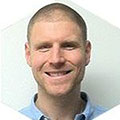 Co-Chair Nick Corsetti Co-Chair Nick Corsetti
National Grid |
 Co-Chair Dain Nestel Co-Chair Dain Nestel
ecobee |
|
| 8:30 am |
Voice for Utilities
By the end of 2017, 16 percent of adults in the U.S. owned voice assistant devices such as Amazon Echo and Google Home, a remarkable adoption rate considering the short history of the technology. Embedded voice assistant technologies like Amazon Alexa and Google Assistant transform a speaker device into a smart home hub. Voice assistant devices provide a channel for utilities to interact with customers in addition to creating new value stream opportunities for utilities to expand beyond their traditional business.
Click to Read More
Learning Objectives:
- Learn about use cases for utilities (regulated and retail).
- Explore innovative opportunities for energy retailers and regulated utilities with the advent of voice assistance.
 Fei Wang Fei Wang
GTM Research |
|
| 9:00 am |
The Smart Home Study: Strategies for Distributed Energy Resource Management and Control
Single-family residences are the front line in the proliferation of DERs) such as solar roofs, smart thermostats, EV charging stations and storage. However, most DERs operate independently, causing adverse impacts on the distribution grid such as two-way power flows and steep late-day increases in system load. The Smart Home Study shows customers, utilities, and energy service companies how to optimize the operation of DERs to maximize customer and grid benefits.
Click to Read More
Learning Objectives:
- Learn most effective utility and customer technology for managing DER.
- Understand how different tariffs impact customer DER load shapes.
- Take home best practices for orchestrating a variety of DER.
 Hunter Richards Hunter Richards
Alternative Energy Systems Consulting |
 Stephan Barsun Stephan Barsun
Itron |
Tapping the Potential of the Smart Home
Over the next five years, the number of smart devices in our homes is expected to increase tenfold. AEP Ohio and Powerley will explore how utilities are tapping into the potential of the smart home, providing their customers greater convenience while generating more demand savings in the process by looking beyond HVAC. The presentation will detail the DR potential that exists across the smart home and outline the components of a “self-sustaining ecosystem".
Click to Read More
Learning Objectives:
- Take away case studies for driving deeper engagement in demand management utilizing the smart home.
- Learn practical steps to tap into the potential of the smart home today.
 David Tabata David Tabata
AEP Ohio |
 Paul Wezner Paul Wezner
Powerley |
|
| 9:30 am |
Using Residential HVAC-Load Control as a Flexible Physical Hedge
Learn how Retail Electric Providers reduced their exposure to high wholesale-electricity prices in ERCOT last summer. Utilizing connected thermostats in the provider’s participating customer homes, they were able to automatically reduce the customers’ HVAC load in response to 5-minute real-time LMPs and strike prices based on the providers’ locational supply positions without impacting customer comfort. Using a rolling load forecast, based on hyper-local weather data and perpetual thermodynamic modeling, the providers were able to optimize day ahead purchases. This approach is more than demand response, it is a way for electricity providers to increase optimization of day ahead purchasing decisions, reduce real-time price risk, and increase opportunities to physically arbitrage price differences between day-ahead and real-time markets, while delivering comfort to customers and increased profitability to providers.
Click to Read More
Learning Objectives:
- Learn how Retail Electric Providers (REPs) can team with DER practitioners to mitigate price risk while adding value for their customers;
- Understand how to quickly respond to locational supply positions without affecting customer comfort.
 Rich Philip Rich Philip
Duke Energy |
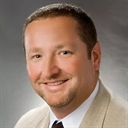 John Smith John Smith
Crius Energy |
 Jaden Crawford Jaden Crawford
Whisker Labs |
|
|
|
| 10:00 am |
Refreshment Break in Sponsor Lounge
|
|
Track 3
 Co-Chair Mark Sclafani Co-Chair Mark Sclafani
Central Hudson Gas and Electric |
 Co-Chair Jason Cigarran Co-Chair Jason Cigarran
Itron |
|
| 10:30 am |
Understanding Your SMB Customers
This session will provide a foundation for attendees to improve engagement with their small and medium business (SMB) customers, an often overlooked and under-researched subset of energy consumers. This session will cover how SMB consumers think about energy, their knowledge of energy efficiency and energy management, common barriers to adoption of energy-saving technologies and practices, and what they would like from their relationships with their energy providers. Following the research briefing, attendees will hear examples from the field on how electric utilities and their partners have successfully developed and implemented programs to engage this group of consumers.
Click to Read More
Learning Objectives:
- Are SMBs interested in engaging in energy?
- How do SMBs view their electricity providers?
- What programs & services garner the most interest among SMBs?
 Moderator Patty Durand Moderator Patty Durand
Smart Energy Consumer Collaborative |
 Dan Smith Dan Smith
Austin Energy |
|
| 11:00 am |
The Intersection of Customer Engagement and Demand Response
Customer engagement is key to a successful demand response program. Whether it’s marketing the program to potential participants or delivering strong customer service, it’s important to take customer-centric approach. Kansas City Power & Light, for example, created a sophisticated marketing program that utilized detailed customer segmentation in order to meet the high number of participants required for its manual Demand Response Incentive Program. Additionally, some utilities such as Austin Energy are taking advantage of having customers enrolled in a demand response to provide them additional tools to better manage their energy use. In this session, Austin Energy and Kansas City Power & Light will detail the different customer engagement strategies they used to deliver successful programs.
Demand Response is the Gateway to Engagement at Austin Energy
 Scott Jarman Scott Jarman
Austin Energy |
 Jenny Roehm Jenny Roehm
Schneider Electric |
 Glen Rhoden Glen Rhoden
Round Rock ISD |
Return to Sneaker Net: A Lower Cost Substitute for Automated C&I DR
 Angie Boone Angie Boone
Kansas City Power & Light |
 Derrick Miller Derrick Miller
CLEAResult |
|
| 11:30 am |
Data Center Demand Response Opportunities
The modern economy relies on cloud computing and data centers to enable our thirst for information. Data center energy use represents about 2% of US electricity usage and is growing at roughly 3% annually, while the rest of the industry sees stagnant energy usage. These high-tech facilities are ripe for demand management implementations and represent an intriguing opportunity for demand response. Aside from shifting computationally-intensive processing load, data centers' IT infrastructure, including the uninterruptible power supplies, emergency generation, and thermal air storage characteristics, all provide a possible rapid-demand response, both of the shed variety, and to strategically increase load.
 Sean Morash Sean Morash
EnerNex |
 Carsten Baumann Carsten Baumann
Schneider Electric |
|
|
|
|
Track 4
 Co-Chair Troy Eichenberger Co-Chair Troy Eichenberger
Tennessee Valley Authority |
 Co-Chair Chris Ashley Co-Chair Chris Ashley
EnergyHub |
|
| 10:30 am |
Making Your Smart Thermostat Program Smarter
Smart thermostat programs are increasingly commonplace in residential energy efficiency and demand response portfolios, but how are they actually performing on a broad scale? To address this question, E Source has benchmarked smart thermostat programs and characterized the current state of smart thermostat program structures, incentive mechanisms, and evaluation results. This presentation will delve into some of the most challenging questions utilities face in designing, implementing, and evaluating their smart thermostat program by answering key questions such as: Which smart thermostat programs are achieving the highest energy savings and load reductions, and how? What program design features and incentive structures are having the greatest impact? What do customers like and dislike about smart thermostat programs?
Click to Read More
Learning Objectives:
- Learn strategies that utilities have used to increase energy savings and demand reduction in smart thermostat programs.
- Understand the most effective incentive methods for customer enrollment and satisfaction.
- Gain insights into the customer experience in smart thermostat programs and how utilities are reducing or eliminating pain points.
 Clare Valentine Clare Valentine
E Source |
|
| 11:00 am |
Providing Options: Program Design Focusing on Customer Choice
When considering a new program design for demand response, the Colorado Springs team focused on providing multiple avenues to participation including automated demand response strategies, manual demand response strategies, along with combined energy and demand management strategies to reach the program goals for commercial and industrial customers. These strategies are presented to the potential end use customers to allow for the customer selection of their preferred participation path. In addition to the commercial and industrial program component, an equipment upgrade for existing residential thermostats combined with the ability to provide a BYOT channel allows for a diversified customer mix that will provide multiple avenues to reach the goals of the program; To manage these various components, a singular control system is implemented with various program control attributes to ensure a seamless operation for the utility while providing the necessary forecasting and measurement and verification data required to evaluate the program.
Click to Read More
Learning Objectives:
- Learn why allowing customer choice maximizes participation.
- Take home multiple strategies for a diversified approach and back up plans to reach goals.
- Understand how both financial and non-financial incentives are perceived by the participating customers.
 Jason Hall Jason Hall
Colorado Springs Utilities |
 Greg Wassel Greg Wassel
Franklin Energy |
|
| 11:30 am |
Voltage Optimization: Distribution Planning Considerations and Demand Savings Potential for an Emerging IDSM Technology
Voltage optimization (VO) efforts are increasingly deployed for energy savings, as well as peak load reductions. Prior studies show that VO reduces peak load and energy use on a circuit by 0.5 to 4%, but the potential for energy and demand savings is highly dependent on circuit characteristics. Key factors that reduce savings include high proportions of commercial and industrial load, grid-connected DERs, high transmission voltage, poor power factors, and low baseline voltage. Implementing a successful VO program requires consideration of these grid characteristics, and program goals (kWh and or kW) can dictate a program's scope. Ameren Illinois and Opinion Dynamics will share grid planning and measurement insights.
Click to Read More
Learning Objectives:
- Learn where to best apply this VO for distribution planning and energy and demand savings potential.
- Assess whether emphasizing peak demand reduction over energy savings could imply significantly different VO deployment plans.
- Understand why the potential for energy and demand savings is highly dependent on circuit characteristics given that this is an emerging technology.
 Tamer Rousan Tamer Rousan
Ameren Illinois Company |
 Lily Brown Lily Brown
Opinion Dynamics |
|
|
|
| 12 noon |
Lunch Buffet in Sponsor Lounge
|
| |
Closing General Session
 Co-Chair Laurie Duhan Co-Chair Laurie Duhan
Baltimore Gas & Electric |
 Co-Chair Joseph Childs Co-Chair Joseph Childs
Eaton |
|
| 1:00 pm |
Three Utility Approaches to Gas Demand Response
Utilities are just starting to use Demand Response to manage gas system constraints; Con Edison, National Grid, and Southern California Gas Company have all recently launched Natural Gas Demand Response Programs and Pilots. The three utilities will each give an overview of their Gas DR programs and discuss the different approaches they have taken, including the reasons for launching, an overview of the program design, results to date, as well as challenges they face and questions they are looking to answer in the early stages of these programs.
Click to Read More
Learning Objectives:
- Why did Con Edison, National Grid and Southern California Gas launch gas DR programs?
- What is the basic design of each of the three gas DR programs?
- What challenges has each utility faced and what do they hope to learn in the early years of the program?
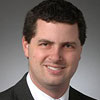 Moderator Moderator
Brett Feldman
Navigant |
 Charles Umberger Charles Umberger
Con Edison |
 Owen Brady Owen Brady
National Grid |
 Andrew Nih Andrew Nih
Southern California Gas Company |
|
| 1:45 pm |
Treating the “Death by 1,000 Pilots Syndrome”: A Discussion
The pace of change in the utility ecosystem continues unabated, yet the processes and practices for validating new technologies and business models that will ostensibly help manage this change remain frustratingly stagnated; This phenomenon challenges vendors, who struggle to introduce new technologies in the face of persistent uncertainty, utilities, who are tasked with understanding how new developments will work at scale, and regulators, who must balance the pace of change with grid costs and reliability, alike; This panel will leverage RMI’s recent work on “Pathways for Innovation” that surfaced best practices in utility pilots, and include a strong dose of audience participation to further the industry-wide dialogue on overcoming the “Death by 1,000 Pilots Syndrome”.
Click to Read More
Learning Objectives:
- Understand key challenges to introducing innovation in the utility ecosystem.
- Take home recommendations for addressing key challenges to innovation.
- Learn strategies and best practices in utility pilot design and execution.
 Moderator Moderator
Mike Henchen
Rocky Mountain Institute |
 Matt Carlson Matt Carlson
Aquanta |
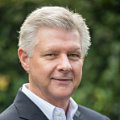 Roger Gray Roger Gray
eSmart Systems |
 Chris Walls Chris Walls
Baltimore Gas and Electric |
|
| 2:20 pm |
Welcome to Minneapolis
|
| 2:25 pm |
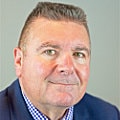
Closing Remarks
Paul Miles, PECO an Exelon Corporation
|
| 2:30 pm |
Ice Cream Social with Utility Load Management Exchange
|
Utility Load Management Exchange Activities
The Utility Load Management Exchange (formerly the Advanced Load Control Alliance) mission is to promote load control as a viable option for utility deployments in demand reduction, economic dispatch, and/or T&D reliability through a forum for utility staff members to share information on program design, marketing, vendor management, benefit-costs and technology deployments. Learn more at www.ulme.org
| Tuesday, November 13, 2018 |
|---|
| 7:00 - 8:00 am |
ULME Pre-Meeting Breakfast at PLMA
Join us for a quick meet and greet before the conference gets underway. |
Wednesday, November 14, 2018, 3:00 - 5:00 pm and
Thursday, November 15, 2018, 8:00 am - 4:00 pm
(Open to Utility Representatives Only, Registration Required) |
|---|
|
Wednesday, November 14
|
| 3:00 - 5:00 pm |
Utility Load Management Exchange Fall 2018 Meeting
|
| 6:00 - 8:30 pm |
Utility Load Management Exchange Fall 2018 Meeting Networking Dinner
|
|
Thursday, November 15
|
| 8:00 - 8:30 am |
Breakfast Buffet for ULME
|
| 8:00 am - 4:00 pm |
Utility Load Management Exchange Fall 2018 Meeting (includes breakfast and lunch)
|
|

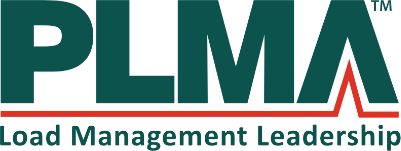
 Co-Chair Mark Martinez
Co-Chair Mark Martinez Co-Chair Christine Riker
Co-Chair Christine Riker Co-Chair Melissa Knous
Co-Chair Melissa Knous Co-Chair Erika Diamond
Co-Chair Erika Diamond Co-Chair Lenore Zeuthen
Co-Chair Lenore Zeuthen Susan Marinelli
Susan Marinelli Damei Jack
Damei Jack Co-Chair Scott Coe
Co-Chair Scott Coe Co-Chair Ross Malme
Co-Chair Ross Malme Co-Chair Justin Chamberlain
Co-Chair Justin Chamberlain Co-Chair Poornima Eber
Co-Chair Poornima Eber Co-Chair Olivia Patterson
Co-Chair Olivia Patterson Scott Jarman
Scott Jarman Brenda Chew
Brenda Chew Claire Valentine
Claire Valentine Paul Wassink
Paul Wassink Rich Barone
Rich Barone Co-Chair Matt Carlson
Co-Chair Matt Carlson Co-Chair John Powers
Co-Chair John Powers Lisa Martin
Lisa Martin Co-Chair Andrea Simmonsen
Co-Chair Andrea Simmonsen Co-Chair Sharyn Barata
Co-Chair Sharyn Barata Ward Eames
Ward Eames Ricardo Luna
Ricardo Luna Teague Douglas
Teague Douglas

 Moderator
Moderator Troy Eichenberger
Troy Eichenberger Ray Martinez
Ray Martinez Tom Hines
Tom Hines Co-Chair Ruth Kiselewich
Co-Chair Ruth Kiselewich Moderator
Moderator Jim Musilek
Jim Musilek Rich Philip
Rich Philip Chris Ashley
Chris Ashley Co-Chair Brian Doyle
Co-Chair Brian Doyle Co-Chair Lynn Stein
Co-Chair Lynn Stein Wendy Brummer
Wendy Brummer David Fleming
David Fleming Darren Gronewold
Darren Gronewold Paul Notti
Paul Notti Paul Wyman
Paul Wyman Shauna Jensen
Shauna Jensen Robin Maslowski
Robin Maslowski Shira Horowitz
Shira Horowitz Co-Chair Dave Hyland
Co-Chair Dave Hyland Steve Cowell
Steve Cowell Tiger Adolf
Tiger Adolf Marie Schnitzer
Marie Schnitzer Sarah Arison
Sarah Arison Joseph Childs
Joseph Childs Tiffany McCann
Tiffany McCann Emilie Stone
Emilie Stone Rolf Bienert
Rolf Bienert Co-Chair Brian Solsbee
Co-Chair Brian Solsbee Co-Chair Debyani Ghosh
Co-Chair Debyani Ghosh Valerie Nibler
Valerie Nibler Sherry Login
Sherry Login Eric Mallia
Eric Mallia Allison Hamilton
Allison Hamilton Robin Lisowski
Robin Lisowski Merlyn Xavier
Merlyn Xavier Jordan Folks
Jordan Folks Jim Stewart
Jim Stewart Carrie Lawrence
Carrie Lawrence Co-Chair Nick Corsetti
Co-Chair Nick Corsetti Co-Chair Dain Nestel
Co-Chair Dain Nestel Fei Wang
Fei Wang Hunter Richards
Hunter Richards Stephan Barsun
Stephan Barsun Paul Wezner
Paul Wezner John Smith
John Smith Jaden Crawford
Jaden Crawford Co-Chair Mark Sclafani
Co-Chair Mark Sclafani Moderator Patty Durand
Moderator Patty Durand Dan Smith
Dan Smith Jenny Roehm
Jenny Roehm Angie Boone
Angie Boone Derrick Miller
Derrick Miller Sean Morash
Sean Morash Carsten Baumann
Carsten Baumann Greg Wassel
Greg Wassel Tamer Rousan
Tamer Rousan Lily Brown
Lily Brown Co-Chair Laurie Duhan
Co-Chair Laurie Duhan Moderator
Moderator Charles Umberger
Charles Umberger Owen Brady
Owen Brady Andrew Nih
Andrew Nih Moderator
Moderator Roger Gray
Roger Gray Chris Walls
Chris Walls